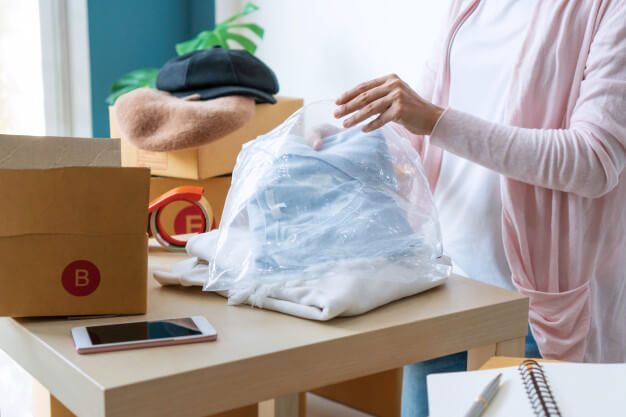If you have a business which is engaged in the shipping of various clothing items, whether you have a small online shop or a retail brick-and-mortar store, you need to know how to pack and ship clothing in the appropriate way. Clothes are some of the most common items shipped today, but not everyone knows how to pack and ship clothes properly. You want your customers to open the parcel and be impressed not just with the clothing itself, but with how it’s packed and presented. But more than this, you want to make sure that the parcel doesn’t get damaged during transport, especially if you are planning to ship it overseas. It’s important to lessen the risk of damage to your parcel so that your customers can receive it in tip-top condition. Here, then, is how to pack clothing for shipping properly.
It takes but a few minutes to pack clothing, but it’s essential that you know exactly what you are doing and what materials to use. It also pays to be as quick and efficient as possible.
The materials you need
You don’t need much in terms of packing materials, but you do need the right ones. Most clothes being shipped will be sent in a simple envelope, but sometimes, the clothes can come out wrinkled or crumpled. So aside from making sure you have the right packaging materials (which includes scissors, the envelope or box, and tape), you also have to fold it properly. If you want to be sure that the clothes are packed well and will not be damaged, it’s often better to go for white postal boxes which look sleek and simple. There are postal boxes that are specially designed to be easy to use and to offer ample protection for the items inside, and these postal boxes are made in such a way that they already come with tabs which are self-locking, reducing the need for tape.
Your step-by-step guide to packing clothing for shipping
First, make sure you have ample space in front of you on a flat surface where you can fold the clothing. Never try to roll the piece of clothing up – this will only make it look wrinkled and crumpled, and it doesn’t give the right impression. Fold the clothing as neatly as you possibly can and avoid creases. There are various guides that can tell you how to fold specific pieces of clothing, so it pays to educate yourself as well.
When you have folded the clothes, make use of some extra wrapping (bubble wrap is often a good choice). This will help you make sure that the clothing will not become water-damaged while it is in transit. Also, see if you can place any additional padding in your box or parcel so that you can further reduce the likelihood of damage to the item. You don’t have to worry about the weight of the bubble wrap or other padded materials you use, as they shouldn’t weigh enough to affect your shipping costs.
The next step is to seal the box’s lid; this is where those self-locking tabs can really come in handy because you don’t have to use tape to seal the box. But here’s one more tip for you: avoid attaching the shipping labels after you have already inserted the clothing into the box. The clothing can plump up the parcel, and this can make the shipping label peel off. Simply attach the labels prior to putting the clothes inside the box, so the label is less likely to peel off.
Read Also:























